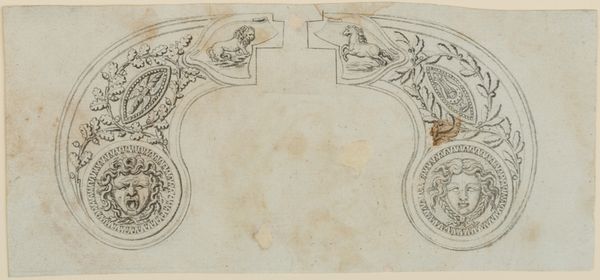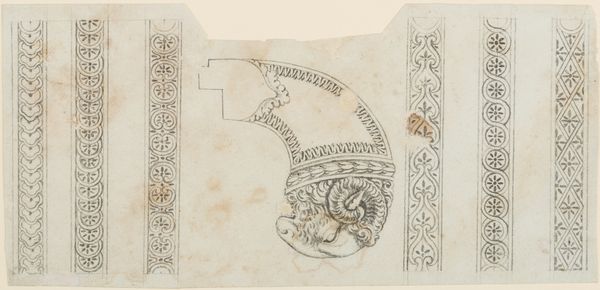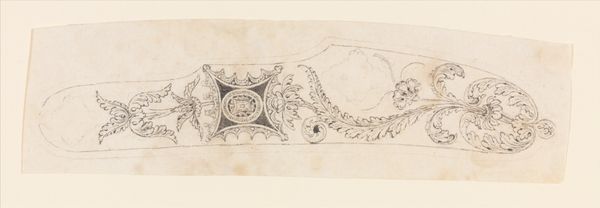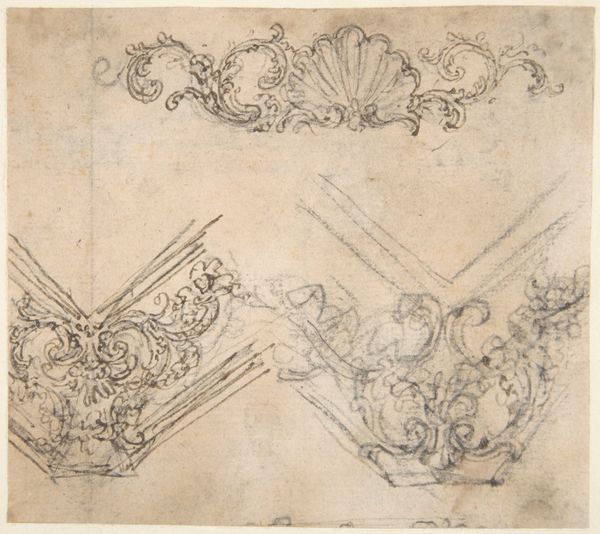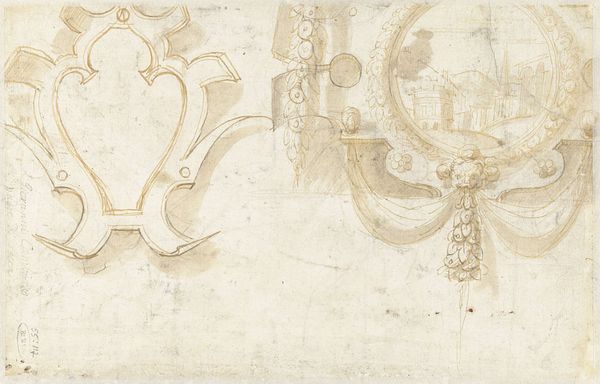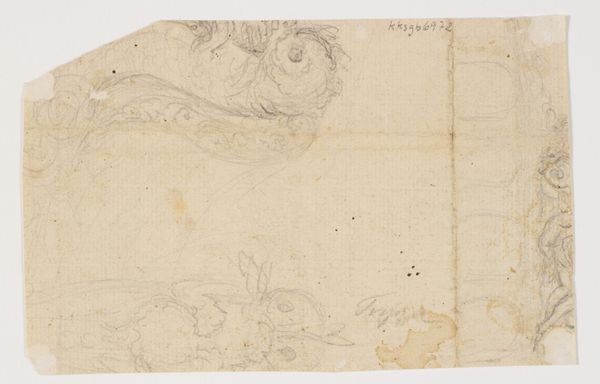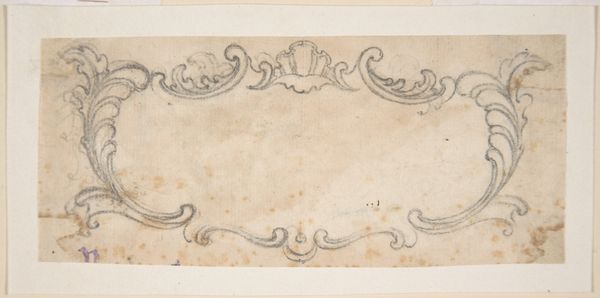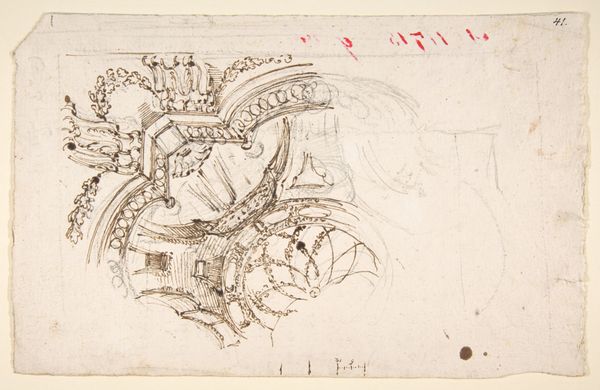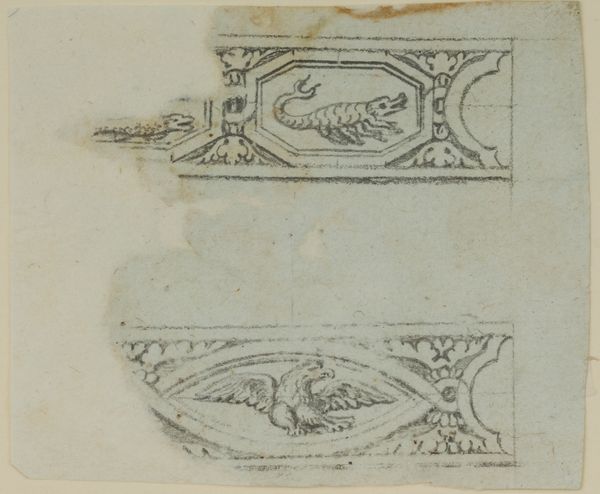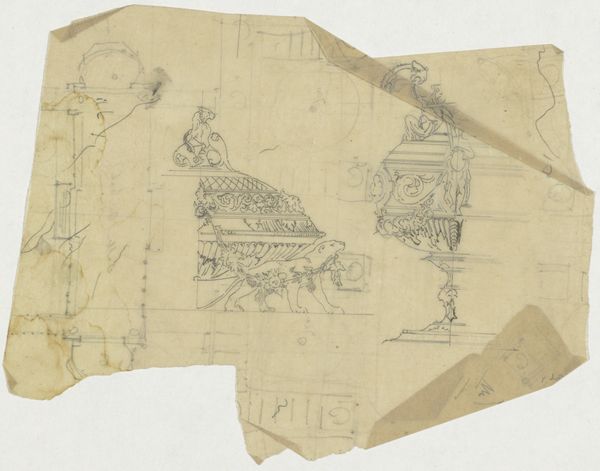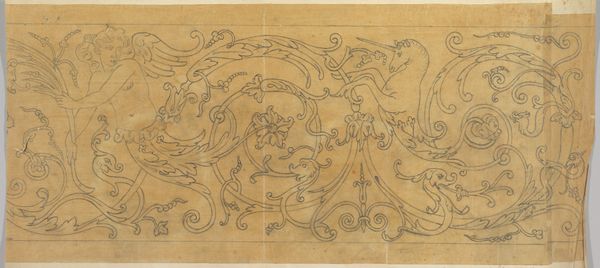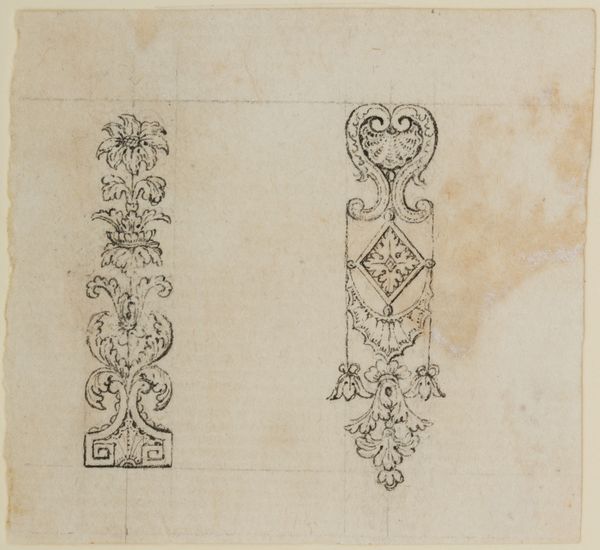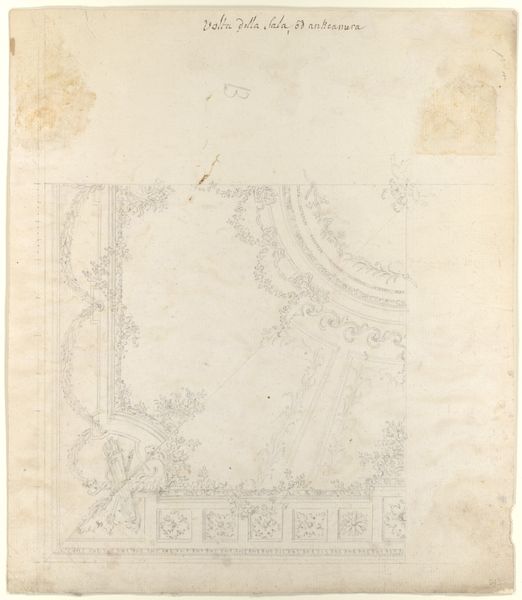
Pair of Designs for the Decoration of the Grips of Pocket Pistols 1772 - 1830
0:00
0:00
drawing, paper, pencil
#
portrait
#
drawing
#
neoclacissism
#
paper
#
geometric
#
pencil
#
decorative-art
Dimensions: 3 1/4 x 7 1/8 in. (8.3 x 18.1 cm)
Copyright: Public Domain
Curator: Here we have a drawing titled “Pair of Designs for the Decoration of the Grips of Pocket Pistols,” created by Nicolas Noël Boutet, dating from 1772 to 1830. Editor: My initial impression is quite arresting. The intricate detailing coupled with what I perceive to be rather haunting visages feels quite unnerving, particularly considering the object the design adorns. Curator: Indeed. Boutet, as director of the Versailles arms factory, was a master of decorative arts. We see his interest in blending classical motifs with the functional form of weaponry. Consider the production involved in realizing these objects— the collaboration between designers, metalworkers, engravers—each bringing specialized skill. Editor: It's hard to ignore the colonial implications here. Finely crafted weapons are, invariably, also tools of violence, reflecting power dynamics between nations and within society. How much was Boutet concerned with the accessibility of these weapons to different demographics? The luxury evident in the design almost speaks to an exclusive market, potentially exacerbating social inequalities. Curator: The opulence was undoubtedly part of the appeal for the elite, reinforcing their status. Each weapon became not just a tool, but an art object valued for its design and craft. Notice, for example, how the artist has rendered mythological characters in these preliminary sketches. Editor: Looking at these grotesque mask designs along the handles, you cannot help but ponder their purpose. I feel compelled to ask whose image these embellishments sought to uphold and whose they aimed to subjugate. How complicit was Boutet in perpetuating or perhaps subverting systemic injustices through his commissioned art? Curator: Perhaps Boutet’s role offers a mirror into the larger machinery of state power during his time, underscoring art's potential involvement in shaping and bolstering it. Editor: Indeed, this sketch allows us an interesting intersection of fine artistry, social status and very practical—yet ethically charged—applications, opening into discussions about who benefited, and at what cost, from the products these artisans made.
Comments
No comments
Be the first to comment and join the conversation on the ultimate creative platform.
